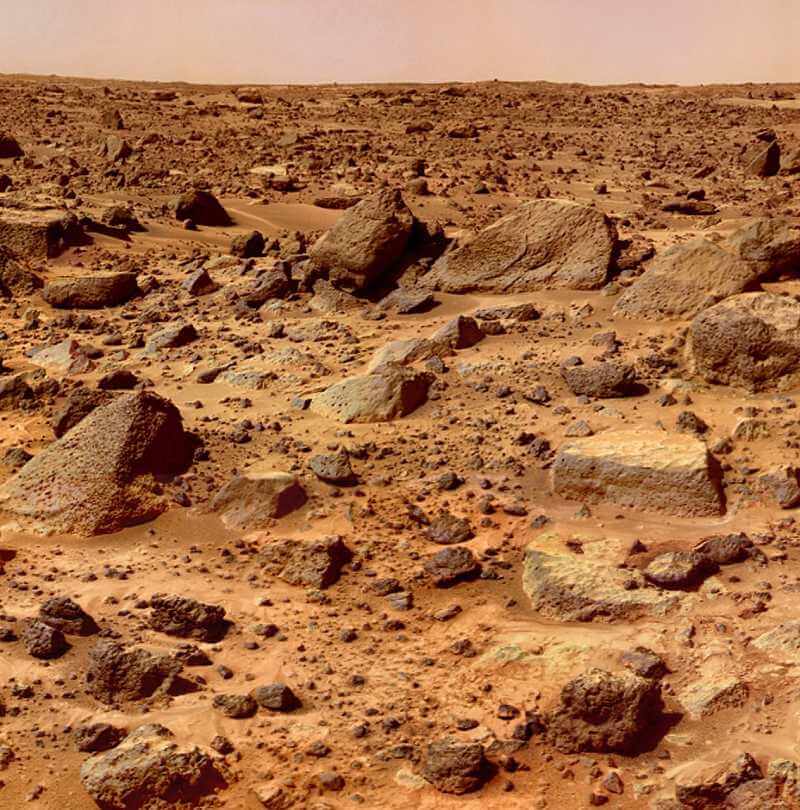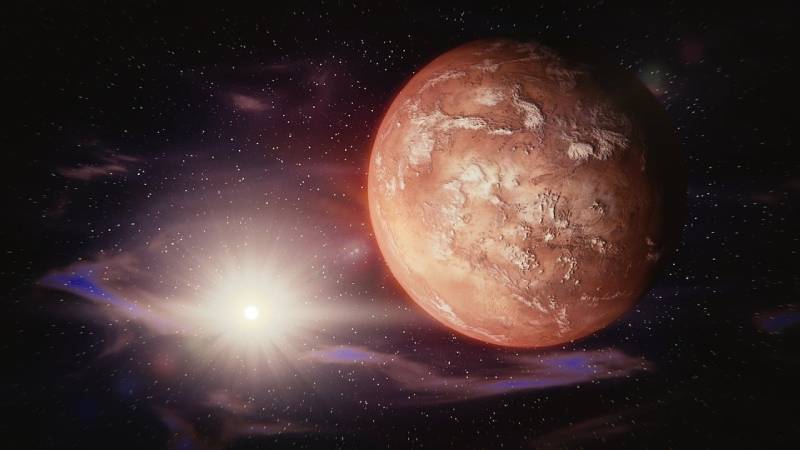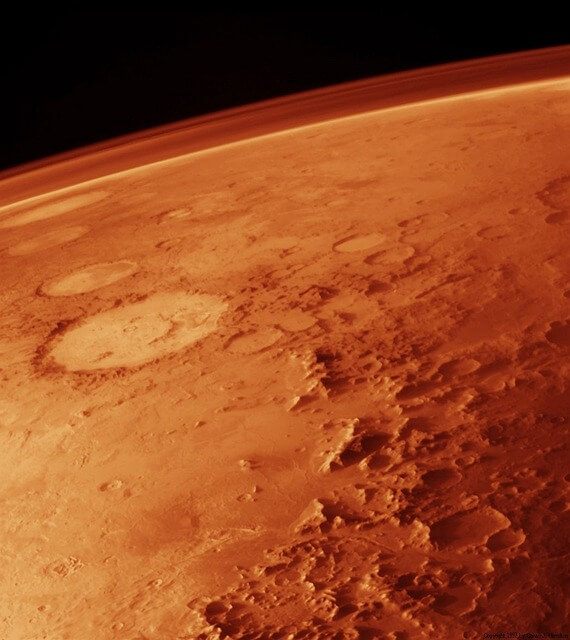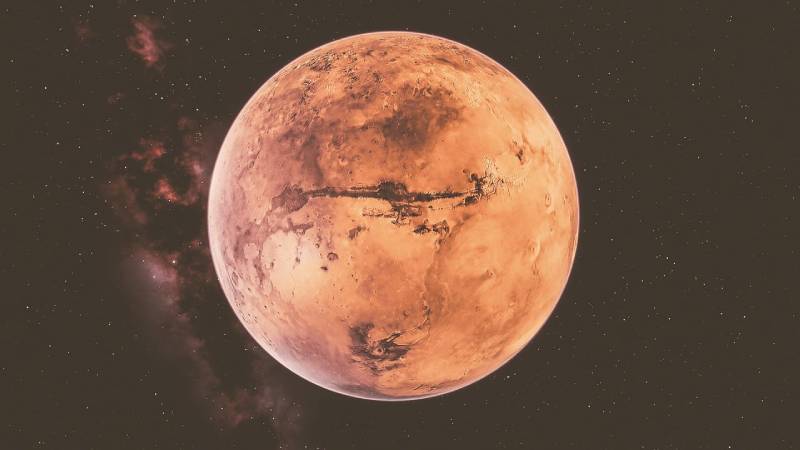That distinctive rusty red hue on Mars has given rise to several myths, misconceptions, and speculations. But what exactly gives Mars the crimson hue? Does it have any relation to the planet’s cold temperature? Also, why do some people even refer to it as the “blood planet? Let’s get into it.
Why Does Mars Appear Red?
Mars gets its nickname “red planet” from the crimson hue. The main reason behind the appearance is the iron-rich surface minerals on Mars. The Martian terrain is rich in iron oxide, commonly called rust. When iron interacts with the oxygen in the atmosphere and water, a chemical reaction occurs, forming an iron oxide layer – the rust.

Over the years, these iron minerals have been exposed to the Martian harsh environmental conditions, causing the oxidization. When oxidization occurs, the Martian surface remains dominated by iron oxide minerals, giving rise to the reddish color. And just as rust gives a reddish color to iron objects on Earth, so does the iron oxide on Mars give it that distinctive red tint.
The Martian surface is also covered in fine dust particles containing iron oxide that reflect sunlight, enhancing the overall red appearance. When sunlight interacts with these iron-rich dust particles, it scatters and reflects the red wavelengths compared to other colors, thus making the red color of Mars more intense. Mars is known for its consequent dust storms covering massive parts of Mars, which can loft even more iron-rich dust into the atmosphere and further saturate the sky with red particles. Sometimes, the dust storms can happen for weeks or months, accelerating the red appearance.
Why Is Mars Cold But Red?
That red color would easily fool you into thinking it’s fiery hot, but Mars is extremely cold. On average, the temperatures on Mars range around -80 degrees Fahrenheit (-62 degrees Celsius). One of the major reasons for the cold climate is the exceptionally thin atmosphere, predominantly composed of carbon dioxide. Unlike Earth, where the thick atmosphere blankets the surface, the atmosphere on Mars is just a fraction of the density.
The thin veil of gases does not have the same heat-trapping abilities as Earth’s atmosphere. To help you understand better, the atmosphere on Earth contains gases like water vapor and carbon dioxide, which trap and retain heat effectively through a process referred to as the ‘”greenhouse effect.” These gases absorb and re-radiate infrared radiation, thus warming the planet.

However, although carbon dioxide does exist on Mars and can convert infrared radiation into heat, there’s not enough of it to make any difference. The lack of these heating-retaining gases causes Mars to lose heat fast, causing extreme cold. Also, the cold climate can be attributed to its distance from the sun. Mars orbits the sun at an average distance of approximately 142 miles (228 million kilometers), which is about 50 million miles farther away from the orbit of the Earth.
Therefore, this greater distance means Mars receives significantly less solar energy than Earth. As the sun’s rays travel this long distance, they become continuously weaker, thus providing warmth and light to Mars’s surface. So you can imagine the combination of the thin atmosphere and that distance – the cold gets even crazier! So, even if Mars appears extremely hot, it is, in fact, super cold.
Is Mars Called The Blood Planet?
While Mars is commonly called the Red Planet, some call it the “blood planet.” This nickname stems from the similarity between the color of blood and Mars. In ancient cultures, objects in space were often linked to myths, deities, and, sometimes, the symbolism of fear. For instance, ancient Romans named Mars after their God of War, Mars. The idea behind naming was two-way.

One, the reddish hue of Mars resembled the bloodshed idea, a concept intimately tied to the god of war. Two, the relation between Mars and the red color symbolized martial prowess, conflict, and battle – making the nickname the best fit. Also, the Ancient Greeks linked the color to their war deity. Egyptians called the planet “Har decher,” the “red one”. Different cultures have different beliefs about why they refer to Mars as the blood planet. Today, with spacecraft visits and advanced scientific knowledge, we know more about it than symbolism.
Conclusion
Mars will continue to be one of the most fascinating celestial bodies, with much to learn about. Today, we have learned that it’s called the red planet because of the rusty surface and richness in iron that oxidizes over time. For you who didn’t already know that Mars is also called the “blood planet” or wondered why it’s called that, now you know.

